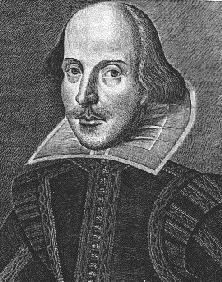Writing The Western Update XIII: "I'm Finished!"
It's done! Finally! Well, the first draft, anyway. Ive been a bit of a bad blogger, too... I actually finished writing the Western the night of 11/11-12/11... more than a month ago, I know, but I wanted to continue covering the different sections as I had originally planned. And of course, with work and the holidays, I couldn't get these posts up as quickly as I'd wanted. But what's done is done. Act V!
The End is my favorite part of any story. Not just because I'm finished, and I get to sit back and bask in my own greatness, but because the end is where everything ties together and the audience is left with a final image or idea that will (hopefully) haunt them out of the theater. It's usually the part that I come up with first, and I use my desire to write it as motivation to get through through the rest of the story.
Act V includes the climactic final shootout between our protagonist and the villain's mooks. There's also one last staring contest in the middle of main street to settle the score once and for all.[ref] But of course. [/ref] I use to love writing action scenes[ref] My observation back in elementary school that the biggest, best action scene usually came at the end was one of the things that first got me interested in story structure. [/ref], but as my tastes have... ahem... matured, I find I have to work hard to keep them interesting for me.
As with chase scenes, simply having people, or starships, or Care Bears, whatever, shoot at each other until one side's been decimated is boring. Everybody has goals, and tries different ways of achieving them- in this case through brutal, bloody violence.[ref]Whether it does get them what they want is another story... [/ref] But that's what everybody wants, right?
Ideally, a fight scene should be snappy and quick. Reading it should be the same way. That means short, clipped sentences. CAPTIALIZED sound effects for emphasis. I'll also use shot headings[ref] Alias "sluglines," like scene headings (which are also called sluglines), but different. If you have The Hollywood Standard, Christopher Riley has some good examples for how they can break up action. [/ref] to break up the paragraphs and keep things brisk.
I like what I have right now, but when I go back to do revisions, I want to condense the
action even more. I have several paragraphs that go on for five or six lines- that doesn't sound like much, but for someone used to reading scripts, it might as well be Moby Dick. It's unfortunate that there's little room for writers who like to compose long, flowing description, but too many people are lazy and stop reading. If you can't beat 'em...
So, the script is done. How long did it take? I started on 9/7/11 and ended on 11/11(12)/11[ref] That means it was after midnight on the 12th, but I hadn't gone to bed yet. I do some of my best work in the evening.[/ref] Acts I and V took the shortest time, one day each. Act II took the longest, from 9/13/11-10/7/11. Act V was probably my biggest page output in one day[ref] I was pushing myself to finish.[/ref], with 21 pages. The final page count was 139 pages, which is on the long side. During revisions I'll hopefully bring that down to 120 pages.[ref]If you're over two hours long, theaters can't have as many screenings per day, which means fewer paying customers. And if it doesn't make enough money, then what's the point?[/ref]
And what of the Five Act Structure? I thought it worked very well. I had to make a few minor adjustments to my outline, but the overall structure never changed. I always knew where I was in the story, and never got lost. Not long after I finished the script, John August posted this podcast with Craig Mazin, where they talk about "second act malaise."[ref] There's a transcript available as well, scroll down to where John says, "One other thing that I want to talk about..."[/ref] This is the difficulty that comes with slogging through the middle of the story, Act II of III.
John and Craig offer various reasons why, but I think one reason Act II of III is so difficult is its open-endedness. The malaise they wrestle with is exactly why I prefer using five acts. Sixty pages is a daunting task- with five acts, I'm checking in with my outline about every twenty pages, so I always know where I'm going. It's much easier to use.
One of John's commenters, since hidden, linked to this article at Film Crithulk. Hulk have similar feeling toward Three Act Structure as Andrew. He point out its ubiquity and inadequacy in helping writer create story. Hulk also show how Five Act Structure present in plays by William Shakespeare, or "Greatest storytelling genius of all time."
Just so we're clear, I'm offering Five Act Structure as another way of doing things. There's no reason to get dogmatic about it. If we learn anything from Three Act Structure, let it be that there's more than one way to write a story. Find something that works for you.
I hope you've enjoyed this trip through the mind of a screenwriter. If you want to read The Western, you're going to have to hold your horses- I need to make revisions first, and take some legal precautions, but rest assured, I will share it with everyone eventually.



